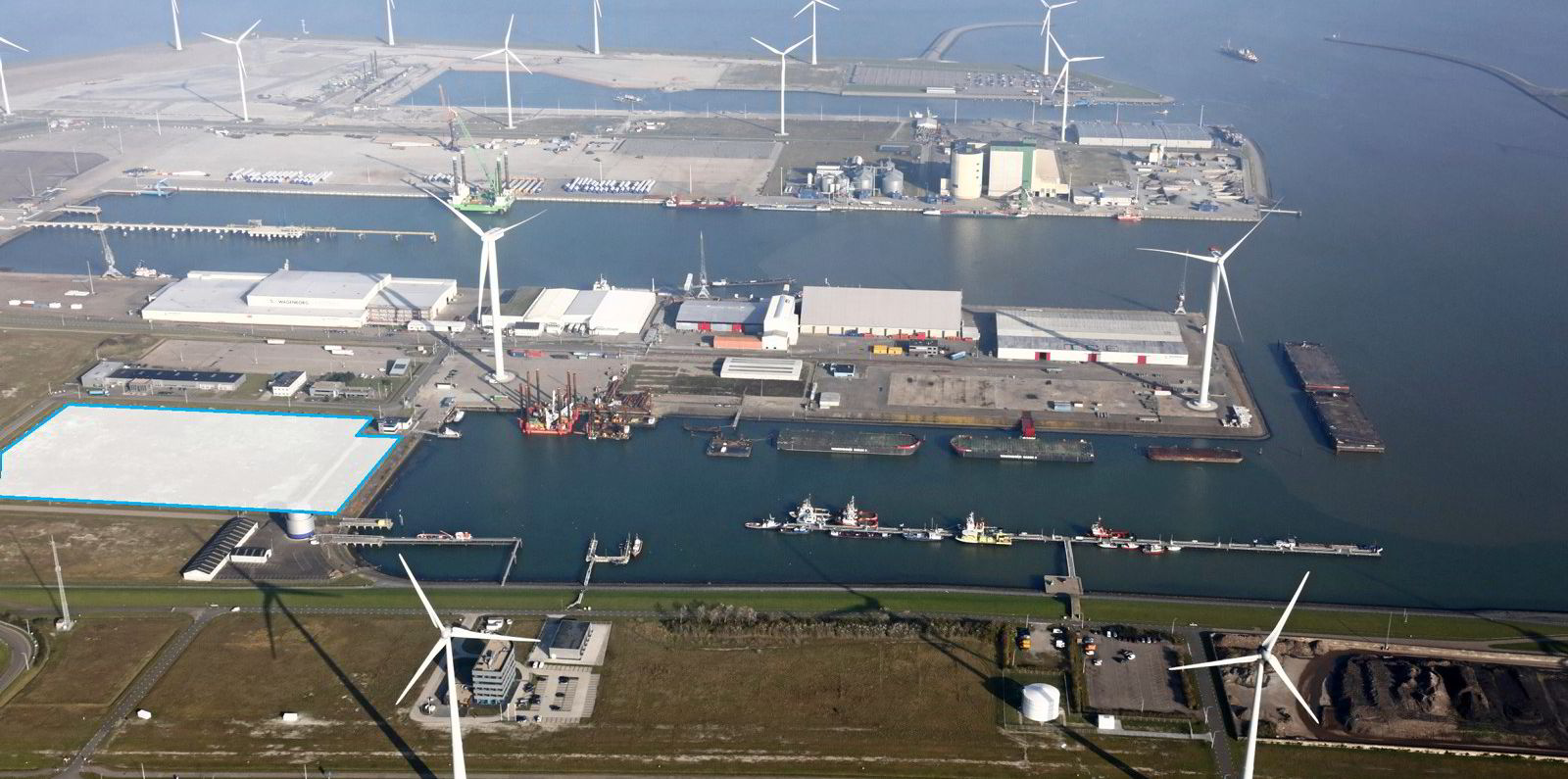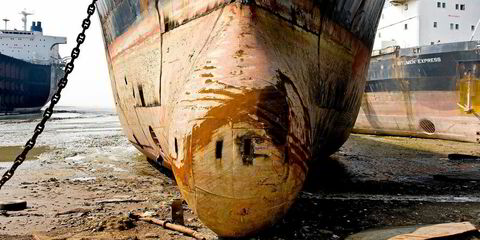In September, not one but two floating regasification units are due on site near the Dutch power plant at Eemshaven, close to the German border on the northern coast of the Netherlands.
Exmar’s 25,000-cbm, 2017-built barge-based floating regasification unit (FRU), renamed FSRU Eemshaven LNG, will be moored against the quay with the New Fortress Energy-controlled, 170,000-cbm floating storage and regasification unit Golar Igloo (built 2014) alongside.
Visiting LNG carriers will discharge their cargoes into Golar Igloo, which will feed LNG to the smaller FRU, with the units — offering a combined capacity of 1,200 standard cubic feet of gas per day — sending regasified LNG ashore.
Dutch energy company Gasunie was lightning fast in acquiring the pair, securing the Exmar unit by mid-March and prompting compliments on its decision-making speed from fast mover New Fortress in a recent results call.
The Eemshaven double act looks set to be the first of Europe’s new FSRUs to be ready for operations this winter, when gas supply concerns are expected to be at their highest.
Exmar officials are not unaware of the unexpected turnaround for their FRU.
The unit, which was built on speculation and initially fixed to Gunvor, became the subject of recently resolved arbitration.
Exmar managing director for infrastructure (LNG & offshore) Jonathan Raes said he and his colleagues travelled worldwide to some far-flung places in their search for alternative employment for the unit, only to see it snapped up in days and deployed at a location a couple of hours from his home.
He said that for 15 years Europe was never really “a primary market” for FSRUs, unless requested in a tender by a public utility, and before Russia’s invasion of Ukraine, eight to 10 regas vessels were trading as LNG carriers.

“Overnight Europe has become the FSRU market of promise,” Raes said, describing the recent situation on regas ships as like a game of musical chairs in which countries were jostling so they were not left empty-handed. But he added: “The musical chairs have played out now.”
Both regas vessels have been undergoing modification work in Europe in preparation for their new roles.
Raes said Exmar’s FRU is being upgraded with a cold ironing plant so it can take its electricity directly from the shore along with its hot water supply, doing away with the need to operate with a boiler system, and cutting emissions.
He said this will transform it into one of the greenest floating regas units in the world.





